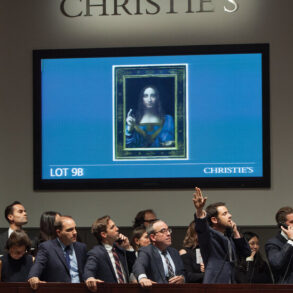
The most recent Art Basel and UBS Global Art Market Report [1] reported that the Global Art Market, while down 4% year-on-year from 2022, has passed the 2019 pre-pandemic levels to $65 Billion on 39.4 million transactions, up 4% over 2022. This strength of the Global Art Market is good news, but it poses a challenge to art collectors and their estate planners. Any volatility can complicate estate planning and volatility in the value of collections in particular, leading to potential tax complications and challenges in asset distribution among heirs. However, sophisticated estate freeze techniques offer effective solutions, allowing collectors to manage and mitigate these risks. Here’s an exploration of the top strategies that art collectors can utilize to safeguard their legacies in the face of market uncertainty.
Understanding the Challenge
Art collections are unique assets not only because of their cultural and personal value but also due to their potential for significant appreciation. However, this value can be highly volatile, influenced by market trends, artists’ reputations and economic factors. This volatility can create estate planning challenges, particularly concerning estate tax liabilities and the equitable distribution of assets.
Estate Freeze Techniques
1. Family Limited Partnerships (FLP) and Limited Liability Companies (LLC)
By transferring art into an FLP or LLC, collectors can manage their collections under a business structure, gifting or selling shares to heirs at current values, and having the artwork treated as an investment rather than as a collectible. This strategy not only keeps the future appreciation of the art out of the collector’s estate, it also preserves control over the collection during the collector’s lifetime, while providing significant income tax advantages for the collector.
2. Grantor Retained Annuity Trust (GRAT)
A GRAT involves transferring art to a trust, where the collector retains the right to receive an annuity for a fixed period. This results in any appreciation above the IRS-approved interest rate passing to the beneficiaries tax-free, effectively freezing the estate value of the art at the time of the initial transfer.
3. Intentionally Defective Grantor Trust (IDGT
SPDR Global Dow ETF
Selling art to an IDGT in exchange for a promissory note can also freeze its current value for estate purposes. The trust pays the seller an interest rate, while any appreciation beyond this rate accrues to the beneficiaries without additional estate or gift tax.
4. Qualified Personal Residence Trust (QPRT)
Not just for real estate, a QPRT can include art displayed in the residence. The trust freezes the value of the art along with the home, with the future appreciation passing to heirs, thereby reducing potential gift and estate taxes.
5. Charitable Lead Annuity Trust (CLAT)
A CLAT allows collectors to support charities while eventually passing the art to heirs. The trust’s initial value is reduced by the present value of the income stream to the charity, lowering the taxable estate.
6. Other Notable Techniques
· **Grantor Retained Income Trust (GRIT)**: Similar to a GRAT but the collector retains the income instead of an annuity. This technique should be combined with a program of leasing artwork through the FLLP or FLLC.
· Dynasty or Purpose Trust: Extends the benefits of a freeze beyond one generation.
· Self-Canceling Installment Note (SCIN) and Private Annuity: Both allow for a transfer of assets in exchange for a financial instrument that provides payments to the collector with significant tax benefits, if the collector passes away before the end of the note’s term.
Benefits of Using Estate Freeze Strategies
These techniques not only help to manage estate tax liabilities but also allow collectors to achieve their legacy goals, such as keeping collections within the family or donating to cultural institutions. By locking in current market values and controlling how collections are handled after their passing, collectors can ensure that their estates are not forced to sell off pieces in a potentially unfavorable market.
Conclusion
The volatile nature of the art market makes it essential for collectors to consider advanced estate planning techniques. Estate freezes are a crucial strategy, allowing collectors to navigate market fluctuations and secure their financial legacies. With proper legal and financial advice, these strategies can be tailored to meet individual needs, ensuring that both financial goals and personal values are maintained for generations to come.








